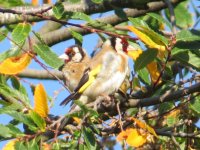Mysticete
Well-known member

ABA had been talking about for...decades...producing an official list of not only introduced species (which are already incorporated into the checklist), but also specifically what populations "count" for list purposes. Well, they finally did so:
https://www.aba.org/aba-area-introd...uvJBzd0IgXdLjNQ9gsOpdX0DQQ4DjujZJblE7vM0KN35o
Interestingly enough they are far more generous than many state checklists. For instance, Egyptian Goose and Red-vented Bulbul are not on the official Texas checklist as established, but ABA considers Texas birds countable.
https://www.aba.org/aba-area-introd...uvJBzd0IgXdLjNQ9gsOpdX0DQQ4DjujZJblE7vM0KN35o
Interestingly enough they are far more generous than many state checklists. For instance, Egyptian Goose and Red-vented Bulbul are not on the official Texas checklist as established, but ABA considers Texas birds countable.





